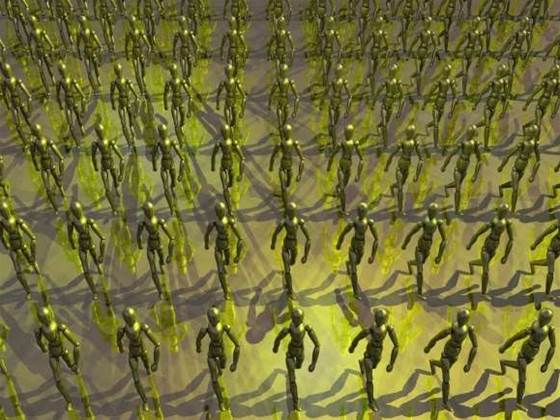
As a part of an international collaboration dubbed the "Symbiotic Evolutionary Robot Organisms" project, or "Symbrion" for short, researchers from the University of York are developing an artificial immune system which can protect both the individual robots that form part of a swarm, as well as the larger, collective organism.
Researches expect an artificial immune system to be able to detect faults and make recommendations to a high-level control system about corrective action - much like how a person's adaptive immune system works to keep the body healthy.
Should any faults be detected, individual robots will be able to share the information with others in the robotic swarm. The swarm as a whole will thus be capable of evolving in the face of new problems, just as a natural immune system is able to cope with unfamiliar pathogens.
The multi-robot approach to artificial intelligence is a relatively new one, and has developed from studies of the swarm behaviour of insects such as ants.
Eventually, swarm robotics might be applied to real-world tasks such as rescuing earthquake victims, according to University of York research leader Jon Timmis, of the Intelligent Systems Group in the Department of Electronics.
"This is an increasingly important area of research," Timmis said. "We may be able to use the collaborative power of many robots in situations where human intervention isn't possible."
"For instance, a Symbrion swarm could be released into a collapsed building following an earthquake, and form themselves into teams to lift rubble or search for survivors."
"This kind of thing is clearly a long way from being realised, but work in this project will allow us to start building the robots of the future," he said.


_(22).jpg&h=140&w=231&c=1&s=0)


.png&h=140&w=231&c=1&s=0)



_(26).jpg&w=100&c=1&s=0)

 iTnews Executive Retreat - Security Leaders Edition
iTnews Executive Retreat - Security Leaders Edition










_(1).jpg&h=140&w=231&c=1&s=0)



